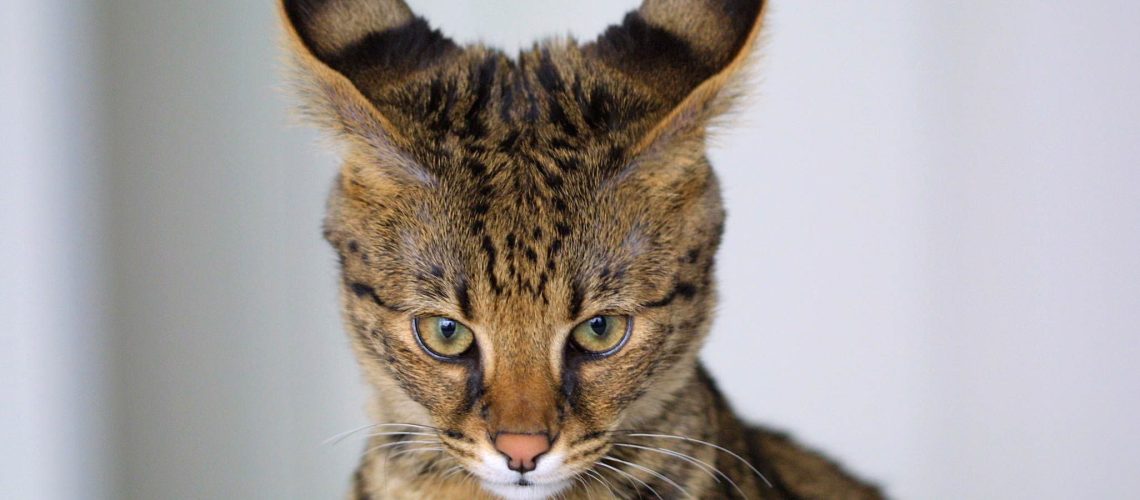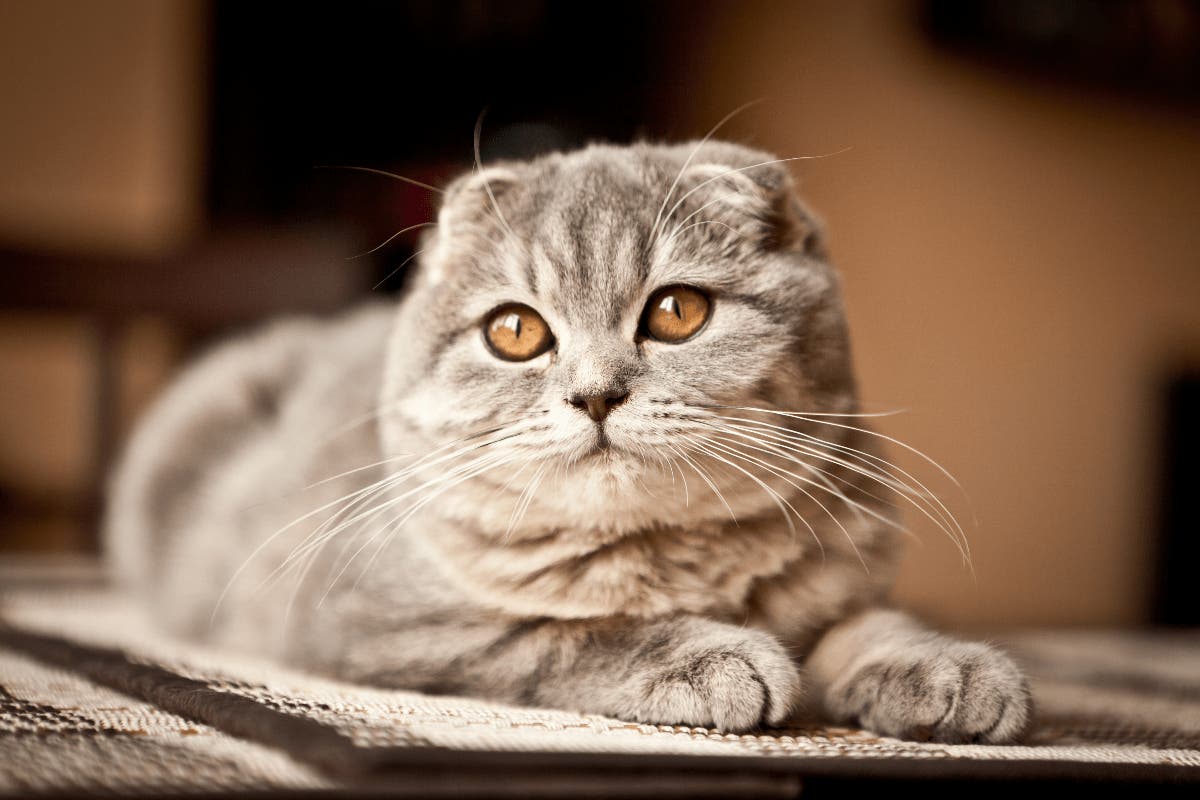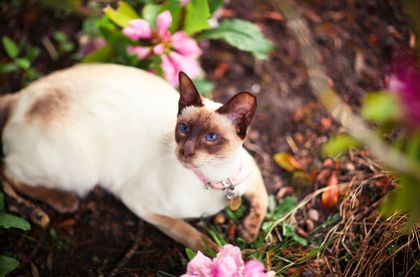Are you ready to embark on a feline adventure like no other? Get ready to dive into the world of cats with big ears, where curiosity and cuteness collide! Get ready to be amazed by these furry friends who are always all ears, eagerly awaiting your attention. Let's dive right in!
Key Takeaways:
- Abyssinian cats are known for their large, alert ears.
- The Scottish Fold breed is recognized for its unique folded ears, giving it a distinctive appearance.
- Sphynx cats have prominent ears that are often described as being bat-like in shape.
- The Siamese breed is famous for its large, pointed ears that contribute to its elegant and sleek appearance.
- The American Curl breed has uniquely curled-back ears, which sets them apart from other cat breeds.
Discover the Fascinating World of Cats with Big Ears
The Beauty and Functionality of Big Ears in Cats
Big ears are not just a cute feature in cats; they also serve important functions. The size and shape of a cat's ears can vary greatly depending on the breed. Some cats have large, upright ears that give them a unique and striking appearance.
These big ears are not only aesthetically pleasing but also functional. Cats use their ears to communicate, hunt, and navigate their surroundings. Their exceptional hearing abilities allow them to detect even the slightest sounds, making them excellent hunters.
The Role of Big Ears in Cooling Down
In addition to their auditory capabilities, big ears also help cats regulate their body temperature. Unlike humans who sweat to cool down, cats rely on other mechanisms such as panting and grooming. However, these methods may not be sufficient during hot weather.
Cats with larger ears have an advantage when it comes to cooling down. The increased surface area of their ears allows for better heat dissipation, helping them stay cool even in scorching temperatures.
The Importance of Big Ears: How They Benefit Certain Cat Breeds
Sphynx Cats: Unique Features Beyond Their Lack of Fur
Sphynx cats are known for being hairless, but did you know they also have big ears? These large ears are one of the defining features of this unique breed. Without fur to cover their bodies, Sphynx cats rely heavily on their large ears for thermoregulation.
Their prominent ears act as efficient radiators by dissipating excess heat from their bodies. This adaptation helps Sphynx cats stay comfortable in both warm and cold environments. Additionally, their big ears enhance their hearing abilities, allowing them to detect prey or potential dangers more effectively.
Savannah Cats: The Wild Look with Exceptional Hearing
Savannah cats are a crossbreed between domestic cats and servals, a wild African cat species. This hybridization has resulted in unique characteristics, including large ears reminiscent of their wild ancestors.
Their big ears serve multiple purposes. Firstly, they provide enhanced hearing capabilities that allow Savannah cats to locate prey accurately. Secondly, these distinctive ears contribute to the breed's wild appearance, making them visually captivating and sought after by cat enthusiasts worldwide.
Meet These Three Cat Breeds Known for Their Large Ears
Maine Coon Cats: Majestic Felines with Tufted Ears
Maine Coon cats are renowned for their impressive size and tufted ears. These gentle giants have long been favored as family pets due to their friendly nature and striking appearance.
Their large tufted ears not only add to their regal charm but also serve practical purposes. The tufts of fur on the tips of their ears help protect them from cold weather and reduce the risk of frostbite.
Scottish Fold Cats: Unique Folded Ears Steal the Show
Scottish Fold cats have gained popularity due to their adorable folded ears. This genetic mutation causes the cartilage in their ear folds to fold forward, giving them a distinct and endearing look.
While Scottish Folds' folded ears may seem like a purely cosmetic feature, they can affect their hearing abilities. Some Scottish Folds may experience varying degrees of hearing impairment due to the structural changes in their ear cartilage. However, this doesn't hinder their playful and affectionate nature, making them beloved companions for many cat lovers.

How Cats Use Their Big Ears to Communicate with Humans and Animals
Ears as Indicators of Mood
Cats use their ears to communicate their mood and intentions. When a cat's ears are forward-facing and slightly tilted, it usually indicates that they are relaxed and content. On the other hand, flattened or backward-facing ears can signify fear or aggression.
By observing a cat's ear position, we can better understand their emotions and respond accordingly. It's important to respect a cat's body language, including their ear movements, to ensure positive interactions with our feline friends.
Listening Skills: Detecting Frequencies Beyond Human Capabilities
Cats possess remarkable hearing abilities that surpass those of humans. Their big ears enable them to detect sounds at higher frequencies, making them more sensitive to subtle noises that may go unnoticed by us.
This heightened sense of hearing allows cats to locate prey in the wild and be aware of potential dangers in their environment. Their ability to detect ultrasonic sounds also contributes to their hunting prowess and adds an element of mystery to these fascinating creatures.
The Pros and Cons of Having Big Ears as a Cat
Advantages: Enhanced Hearing Abilities
- Cats with big ears have superior hearing compared to breeds with smaller ears.
- They can detect prey or approaching predators more easily.
- Big-eared cats are more attuned to sounds in their surroundings, which enhances their overall safety.
Disadvantages: Vulnerability to Cold Weather
- Cats with large ears may be more susceptible to cold weather due to increased heat loss.
- They might require additional warmth or protection during chilly seasons.
- In extreme cases, prolonged exposure to cold temperatures can lead to frostbite on their ears.
Exploring the Connection Between Ear Shape and Hearing Abilities in Cats
Anatomy of a Cat's Ear: The Inner Workings
A cat's ear consists of three main parts: the outer ear, middle ear, and inner ear. Each section plays a crucial role in capturing and transmitting sound waves to the brain for interpretation.
The size and shape of a cat's outer ear, including the pinna (the visible part), influence how efficiently it collects sound. Larger ears with well-developed cartilage tend to capture more sound vibrations, enhancing a cat's hearing abilities.
The Impact of Ear Shape on Hearing Range
Cats with big ears often have an extended hearing range compared to breeds with smaller ears. Their larger pinnae enable them to detect higher frequencies that are beyond human auditory capabilities.
This expanded hearing range allows cats to communicate through vocalizations that may be imperceptible to us. It also aids in hunting by enabling them to hear the ultrasonic sounds produced by small prey animals such as mice or birds.
Fascinating Facts About Cats with Big Ears Revealed!
Ear Size Variation Among Domestic Cats
While some domestic cat breeds are known for their big ears, it's important to note that not all cats have large ears. There is considerable variation in ear size among different breeds and even within individuals of the same breed.
Some cats may have smaller or more rounded ears, which doesn't diminish their hearing abilities or unique qualities. Each cat's ear size contributes to their overall appearance and character, making them all the more intriguing.
The Evolutionary Advantage of Big Ears in Wild Cats
In the wild, big ears provide a significant advantage for survival. Wild cats such as lions, tigers, and cheetahs have evolved large ears to enhance their hunting skills and detect potential threats from afar.
These majestic creatures rely on their acute hearing to locate prey, communicate with fellow members of their species, and remain vigilant in their surroundings. The evolutionary significance of big ears in wild cats showcases the importance of this feature throughout the feline kingdom.
In conclusion, cats with big ears are not only adorable but also have unique characteristics. From the Scottish Fold to the Sphynx, these feline friends are known for their exceptional hearing abilities and charming appearance, making them a great choice for cat lovers everywhere.
What breed of cat has the big ears?
The Shorthair Oriental is a cat breed recognized for its distinct feature of large ears. Despite its slim body, smooth fur, and triangular head shape, it has ears resembling those of Dumbo the elephant.
Which cat is known for its ears that fold forward?
The Scottish Fold is a type of house cat that has a genetic mutation affecting the cartilage in its body. This mutation causes the ears to fold forward and downwards, resulting in an owl-like appearance.
What Oriental cat has big ears?
The Oriental Shorthair is a breed of cat that is known for its commanding presence in a room. Despite their appearance, with large ears, angular faces, and slender bodies, these cats are actually very friendly and loving in nature.
What are the cats with big ears and teeth?
The caracal, also known as Caracal caracal, is a medium-sized wild cat that is found in Africa, the Middle East, Central Asia, and arid regions of Pakistan and northwestern India. It is known for its strong body structure, tall legs, short snout, tufted ears, and long fangs.
What breed of cat has short hair and big ears?
The Cornish Rex cat, which comes from Cornwall, England, got its name from the Rex rabbit breed in Europe, which has a similar coat texture. This cat is known for its curly short fur and big ears.
What big cat has the largest ears?
Servals have the most proportionally large ears among all cat species. Their remarkable hearing ability enables them to hear and pinpoint the ultrasonic squeaks of rodents.

















